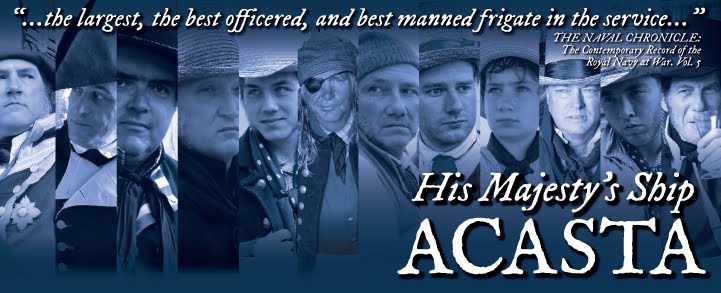What is Historical Cooking?
Written by Acasta Ship's Cook Michael Schwendau
It is a curious adventure of finding a dish, tracking it back through time and then sourcing ingredients, sometimes making ingredients or figuring out a rational alternative.
In the scope of the culinary world, there is a lot of theft going on. Noodles from China became pasta in Italy; Savory pies from Germany became staples in England; Ingredients will change, cooking methods a bit too, but in the end. If you go far enough down the rabbit hole you will make it to the other side of the culinary looking glass and find there is a plenty that taken or transformed.
This thing, historical cooking, sometimes means chasing a recipe backwards in time. De-evolution if you will. Making notes of what ingredients changed, what culture impacted it the most and when, how, where occasionally. The modern taste for flavors is constantly changing, that is a challenge too. Especially with the spice and flavor profiles in many old recipes. Equipment is always a nagging issue; do you go hand on or use the blender. Questions always come up such as; “Can I still get the ingredients for a white pudding? Where do I find cocks comb in 2017? Will they eat liver and heart in a Pig’s Fry, where do I find said liver and heart? How or rather why the heck would you boil a bag of beef?!”
 Then the challenge of the preparation and presentation. Do you just assemble the dish or do you go through the rough process of making the force meat, milling the suet, and lastly buying that copper pudding pot to make it authentic? Do make at home or do I take on the risk of a flop in the field over a coal fire? How am I going to serve this? Where do I find a Queen Anne Trench Platter?!
Then the challenge of the preparation and presentation. Do you just assemble the dish or do you go through the rough process of making the force meat, milling the suet, and lastly buying that copper pudding pot to make it authentic? Do make at home or do I take on the risk of a flop in the field over a coal fire? How am I going to serve this? Where do I find a Queen Anne Trench Platter?!
Practice makes perfect, perfect is a moment, and never serve panic. So what I am really saying to you is; never give up and incorporate it into your home meal occasionally until you feel comfortable with it and then move to the next step in the chain of events. Puddings will burn, meat will be under cooked, but if you aren’t trying to learn the telltale signs of an oncoming flop… you will never meet success. If it goes haywire on you. DO NOT PANIC, just calmly regroup and either try again or reinvent the dish.
Consider this as an essay on why you should look at your food with the same enthusiasm as finding a period piece of clothing or furniture. Food in the living history world, is often over looked and not given much consideration. Take this as a challenge if you are a living historian, learn to make a few period dishes. For our casual guest, let it be an insight to discover the history of what you might have for supper today and the detail we seek in our adventure as the crew.
...to be continued tomorrow in part 2 "All Hands to the Books!"



Looking forward to it. Made some Ships bread last May. Was quite the treat. Used the pattern of the piece preserved in the USS Constitution museum.
ReplyDelete